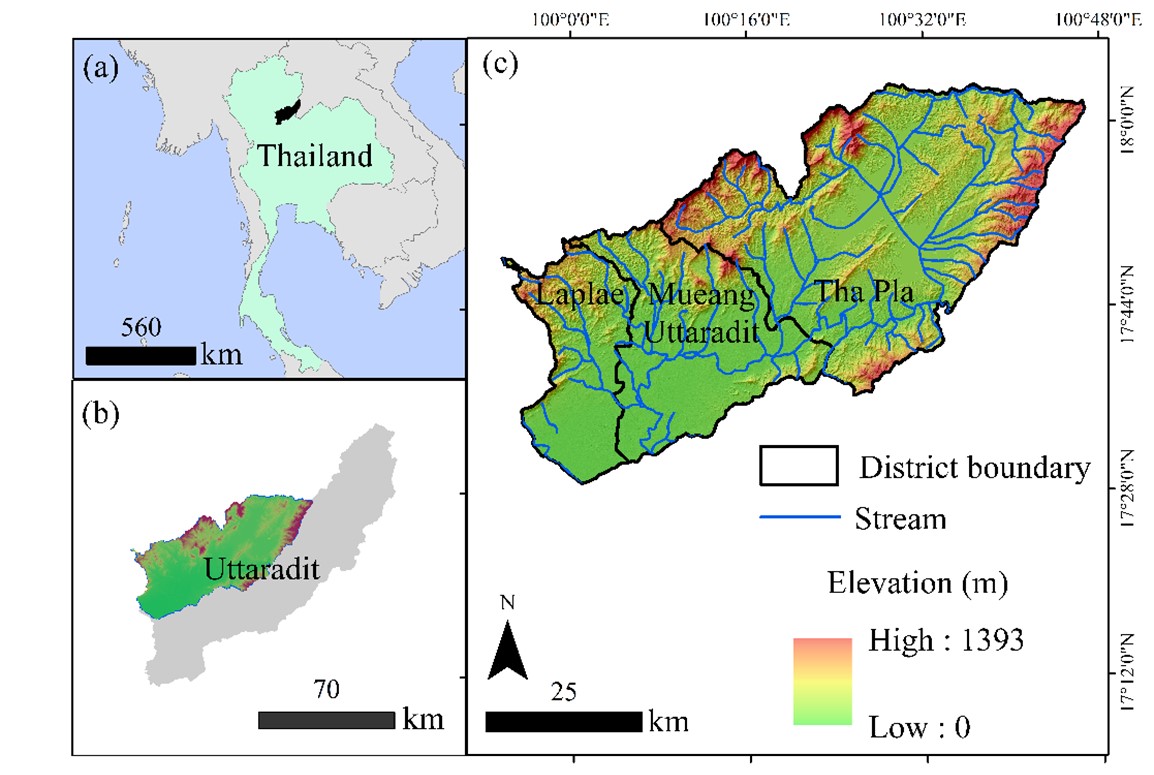Potential Factors of Landslide Recurrence in Uttaradit, Thailand: A Case Study in Laplae, Mueang Uttaradit, and Tha Pla Districts
Main Article Content
Abstract
Laplae, Mueang Uttaradit, and Tha Pla district, Uttaradit province, Thailand are considered as high potential landslide areas. Still, this disaster is difficult to address because of complex factors controlling its occurrence. Therefore, the prediction of the potential landslide area using a landslide susceptibility map has been able to accomplish as a great strategy for the disaster. A landslide susceptibility map was produced by the geographic information system (GIS) data. The methods were initially conducted by the selection of potential factors related to landslides, which were lithology, slope, aspect, plan curvature, profile curvature, distance to stream, land use, and rainfall. All factors were assigned coefficients weight, and analyses frequency ratio (FR). Then, the weighted variables have been combined and ranked into five different susceptibility levels, which were very low, low, medium, high, and very high. Finally, the produced landslide susceptibility map has been validated by the success rate and prediction rate. After the analysis, the high and the very high landslide susceptibility area were dominantly covered in the northern and northwest parts of the study area; and the factor of slope, land use, and lithology potentially caused the landslide risk indicated by high frequency ratio values. In addition, the produced landslide susceptibility map had high accuracy, about 90% of success rate and prediction rate, calculated from the area under the curve (AUC), this map would be beneficial for geological hazard management and land use planning. The landslide susceptibility map and the GIS-based methods can be applied to the regional area with additional benefits to well-being, society, and the environment.
Article Details

This work is licensed under a Creative Commons Attribution-NonCommercial 4.0 International License.
Published articles are under the copyright of the Applied Environmental Research effective when the article is accepted for publication thus granting Applied Environmental Research all rights for the work so that both parties may be protected from the consequences of unauthorized use. Partially or totally publication of an article elsewhere is possible only after the consent from the editors.

